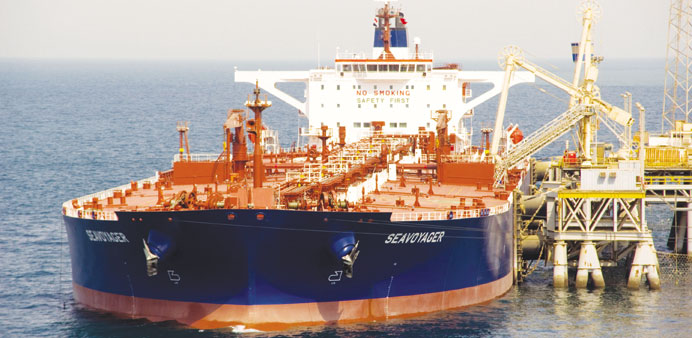An oil tanker loads up with Iraqi crude oil at Al Basra oil terminal in the Northern Arabian Gulf (file). Pipeline bottlenecks at Iraq’s southern ports are preventing Opec’s second-biggest producer from increasing oil exports, even while it offers competitive pricing.
Reuters/London
Pipeline bottlenecks at Iraq’s southern ports are preventing Opec’s second-biggest producer from increasing oil exports, even while it offers competitive pricing that is attracting rising demand.
Regional rivals including Opec heavyweight Saudi Arabia were unnerved in December when Baghdad announced a 2013 export target of 2.9mn barrels per day (bpd), up 500,000 bpd from last year.
But the gains have yet to materialise.
Bad weather was blamed at the start of the year, but now logistical issues are likely to keep exports close to 2.4mn bpd - the average for 2012 - through the first half of this year, Iraqi and Western oil industry sources say.
“Material growth will not happen quickly,” said a senior Western oil executive from a company operating in southern Iraq.
Iraq is increasingly concentrating on selling its crude oil to Asia, undercutting its regional competitors.
Buyers of Basra Light crude, which accounts for nearly 90% of Iraq’s exports, asked for 2.8mn bpd in May — the highest ever level, a senior Iraqi oil official said, although only 2mn bpd has been allocated.
“The main problem is with logistics. There are limitations on the pumping capacity to the southern export facilities. But this will be resolved,” the official said.
“There is huge demand for our oil. Some customers are trying to avoid Iran and buy from us instead.”
Asian buyers of Iran’s crude have cut back sharply as tough Western sanctions on Tehran over its nuclear programme make it increasingly difficult to pay for and ship the oil.
After stagnating for decades due to wars and sanctions, Iraq’s oil output and exports began to rise in earnest in 2010 after Baghdad secured service contracts with companies such as BP, Royal Dutch Shell, Eni and Exxon Mobil.
Swift gains at Iraq’s giant southern oilfields increased supply by 600,000 bpd over the past two years, making Iraq the world’s fastest growing oil exporter.
Work continues apace. Initial flows at Majnoon, operated by Shell, are expected to hit 100,000 bpd next month, but Western oil executives say Iraq’s lofty export goal of 2.9mn bpd may not be met until the fourth quarter.
Production in the first quarter was just above 3mn bpd, allowing for exports of 2.4mn bpd, which generated more than $20bn.
To facilitate its rising supply, Iraq expanded export capacity in the Gulf last year by installing two offshore floating terminals. But it’s still fitting subsea pipelines and loading pumps for optimal use of the capacity.
Storage is also a constraint: there is only space for 6.5mn barrels of crude.
Furthermore, Kirkuk crude from Iraq’s northern oilfields accounted for about 300,000 bpd of the export total. The autonomous Kurdistan Regional Government (KRG) is due to contribute 250,000 bpd to Iraq’s overall exports.
But a payment dispute between the KRG and Baghdad has kept shipments of over 100,000 bpd on hold since December. The halt, if prolonged, will frustrate Iraq’s plan to increase exports.
These hurdles suggest Iraq’s production and exports are likely to grow by an average 200,000 to 300,000 bpd this year, Western and Iraqi oil experts say.


